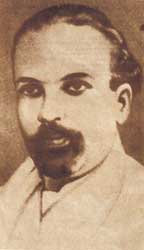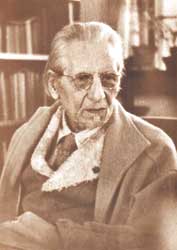Walisinghe Harischandra
Patriot Walisinghe Harischandra was a follower of Anagarika Dharmapala who gave leadership to the Buddhist revivalist movement after the lead given by Henry Steele Olcott. True to his name Walisinghe was a 'powerful lion.' He was a brave Sinhalese.
Born in Negombo as Edward de Silva, he had his early education under the scholar-monk Ven. Dhammaratana Tissa of Sugatharamaya, Hunupitiya. After a few years at St. Mary's College, Negombo he was entrusted to a lawyer uncle in Colombo, C. A. de Silva to continue his studies. He studied English under Dr. W. A. de Silva and was a student of Wesley College for six years (1889-95).
While studying law, he developed a keen interest in Buddhism and gradually began working as a true nationalist. He changed his name to E. de S. Walisinghe and started teaching at the Sunday (Dhamma) school at Ananda College. By constantly addressing various meetings, he soon became a powerful orator. A further change in his name made him drop the links to his first name 'E de S' and adopting the name Walisinghe Harischandra on the advice of
Ven. Pannamoli Nayaka Thero of Randombe temple.
In 1898, he gave up the idea of becoming an advocate and started working with the Mahabodhi Society which had been established by Anagarika Dharmapala, first as assistant secretary and later as secretary. Instead of leading a normal layman's life he decided to be a Brahmacharya which meant he would remain a bachelor, devoting his time to religious and national work. Actively supporting Anagarika Dharmapala's mission to save Buddhagaya and the Sri Maha Bodhi – the revered tree under which Prince Siddhartha attained Enlightenment, he spent some time in India (Dambadiva to the Buddhists) in 1899 participating in the campaign 'Save Buddhagaya.'
Meanwhile, Walisinghe Harischandra had turned his attention in making Anuradhapura a sacred city. He started the campaign to reconstruct Anuradhapura by delivering a lecture in November 1898 and with the financial assistance of a philanthropist Mudaliyar J. M. Weerasuriya, started constructing a pilgrims' rest. He founded the Ruvanveli Dagoba Improvement Society. During his campaign he even took government officials to court.
He wrote and published a well compiled booklet titled 'The Sacred City of Anuradhapura' in 1904 (he was then the general manger of the Anuradhapura Mahabodhi Society) In a section titled ‘The best way to see the ruins,’ he guided newcomers to the city, on how to visit the numerous shrines.
He kept a diary of daily activities and among the entries towards the latter part of his life was one on 'The best die young.' He died on September 13, 1913 at the relatively young age of 37. He has been honoured and respected as the saviour of Anuradhapura.
|


